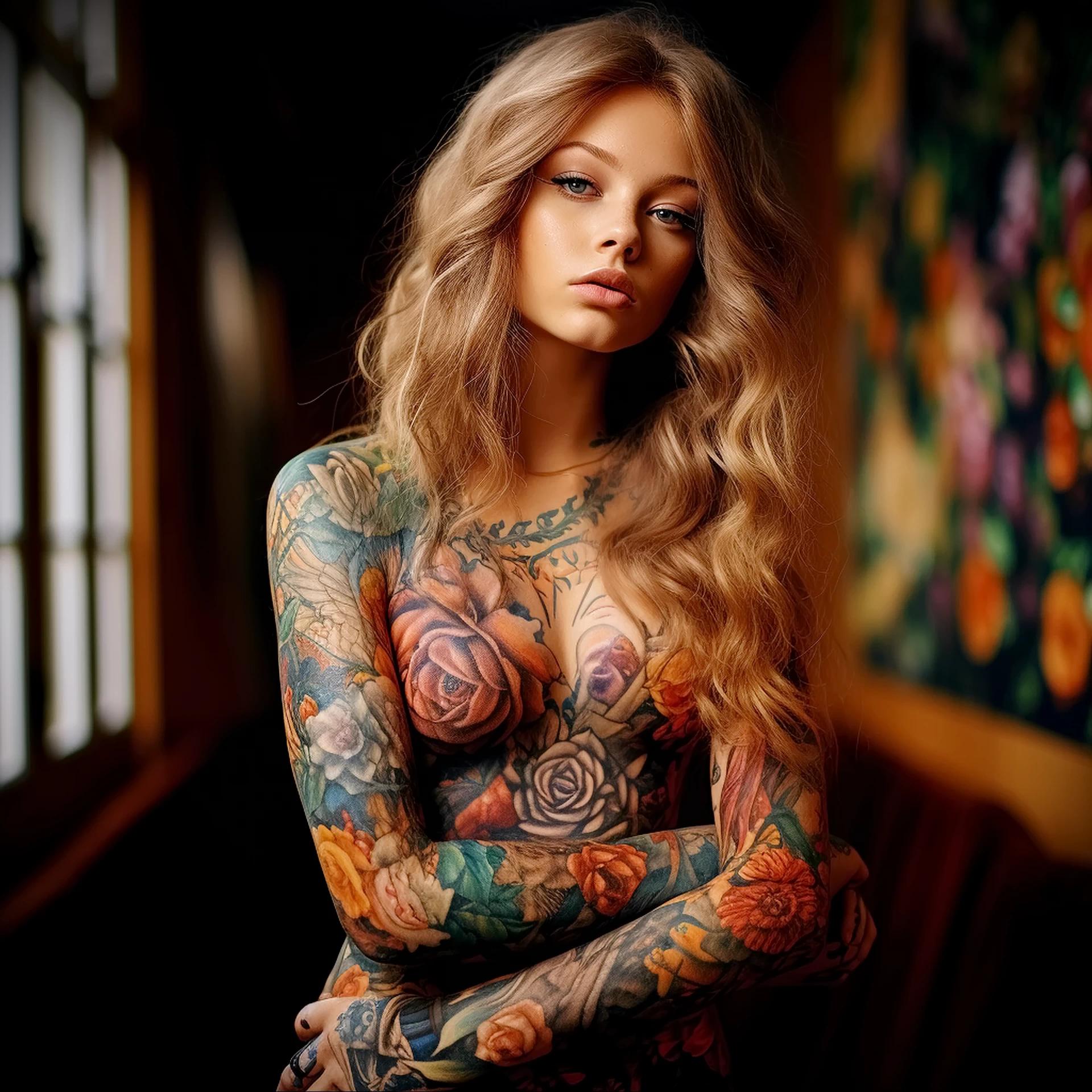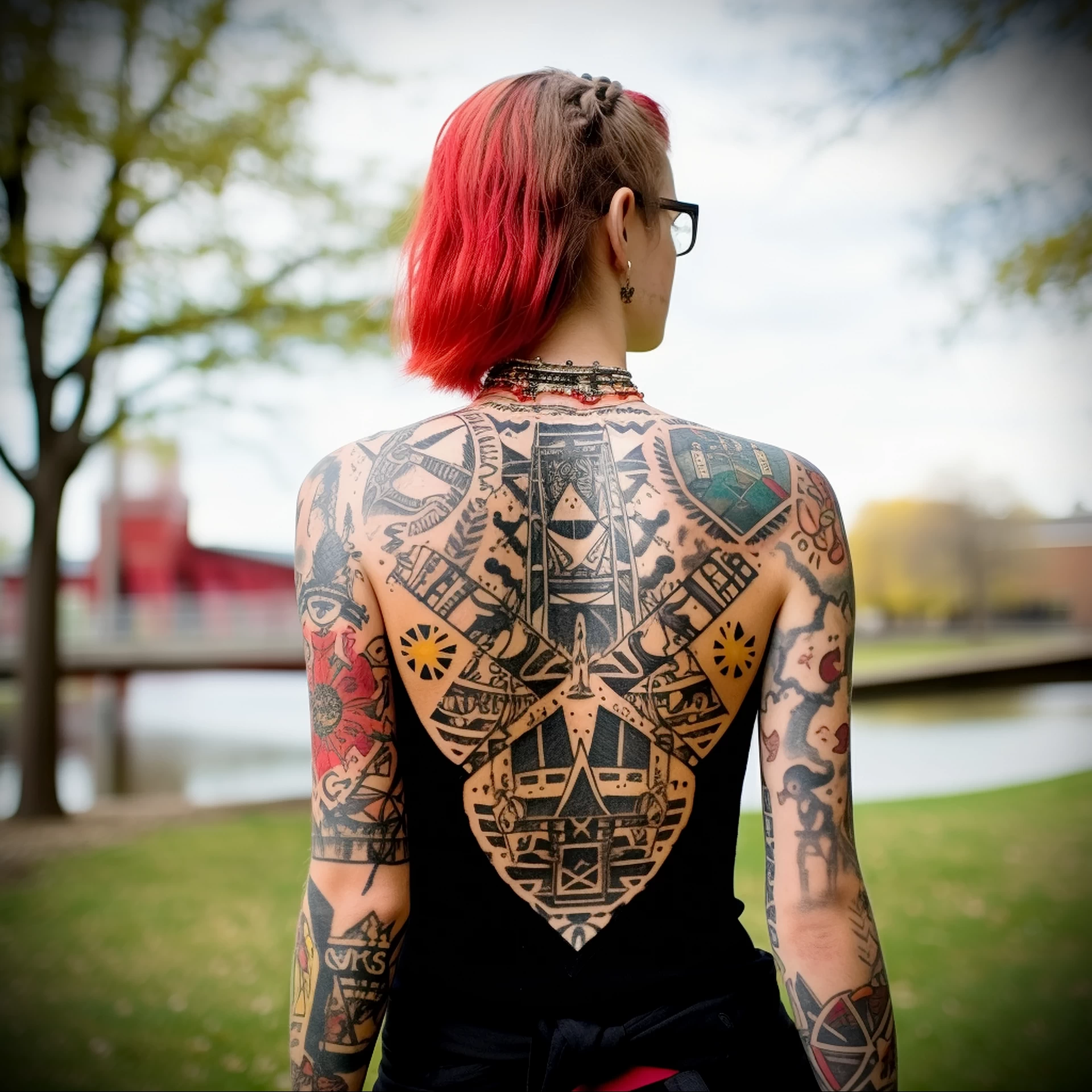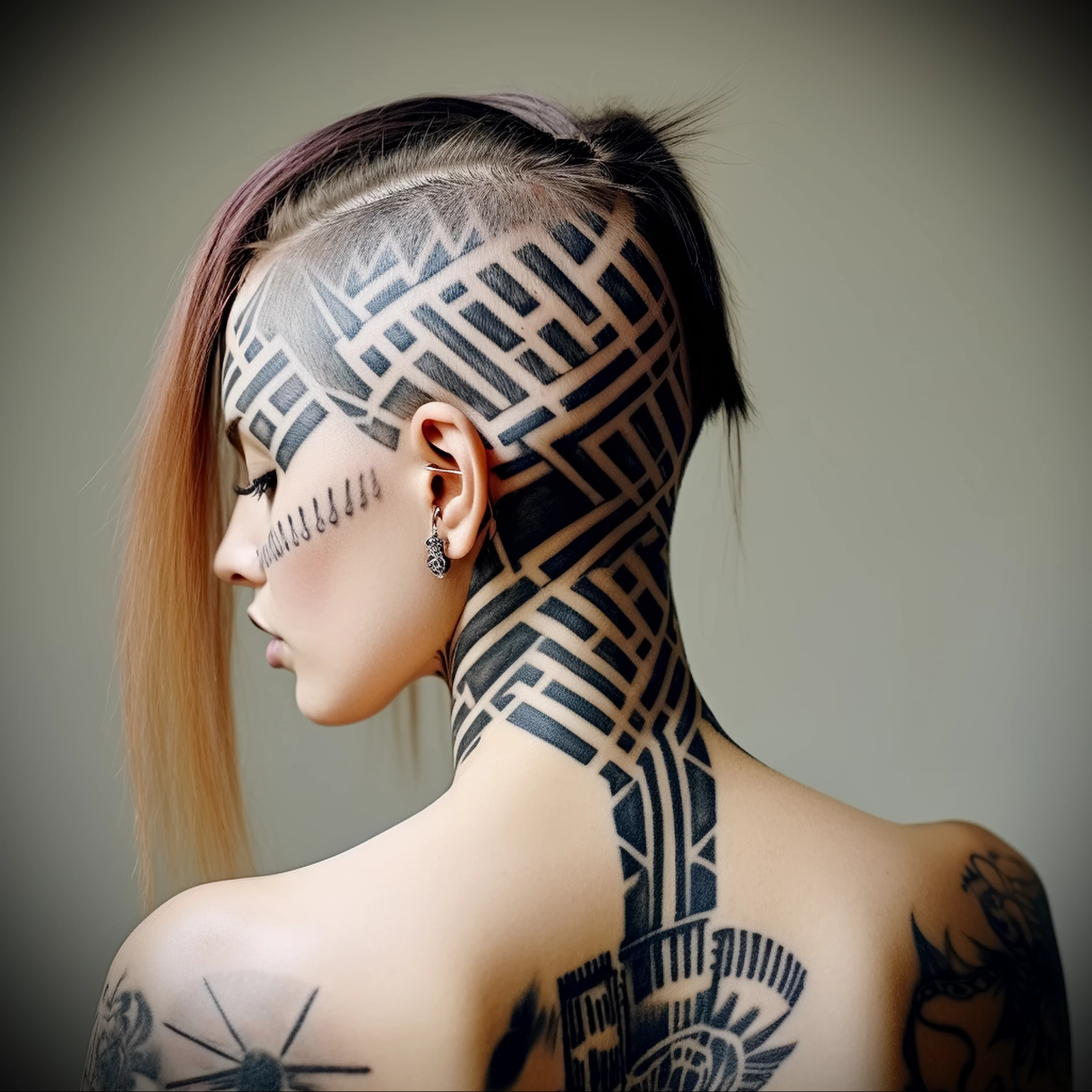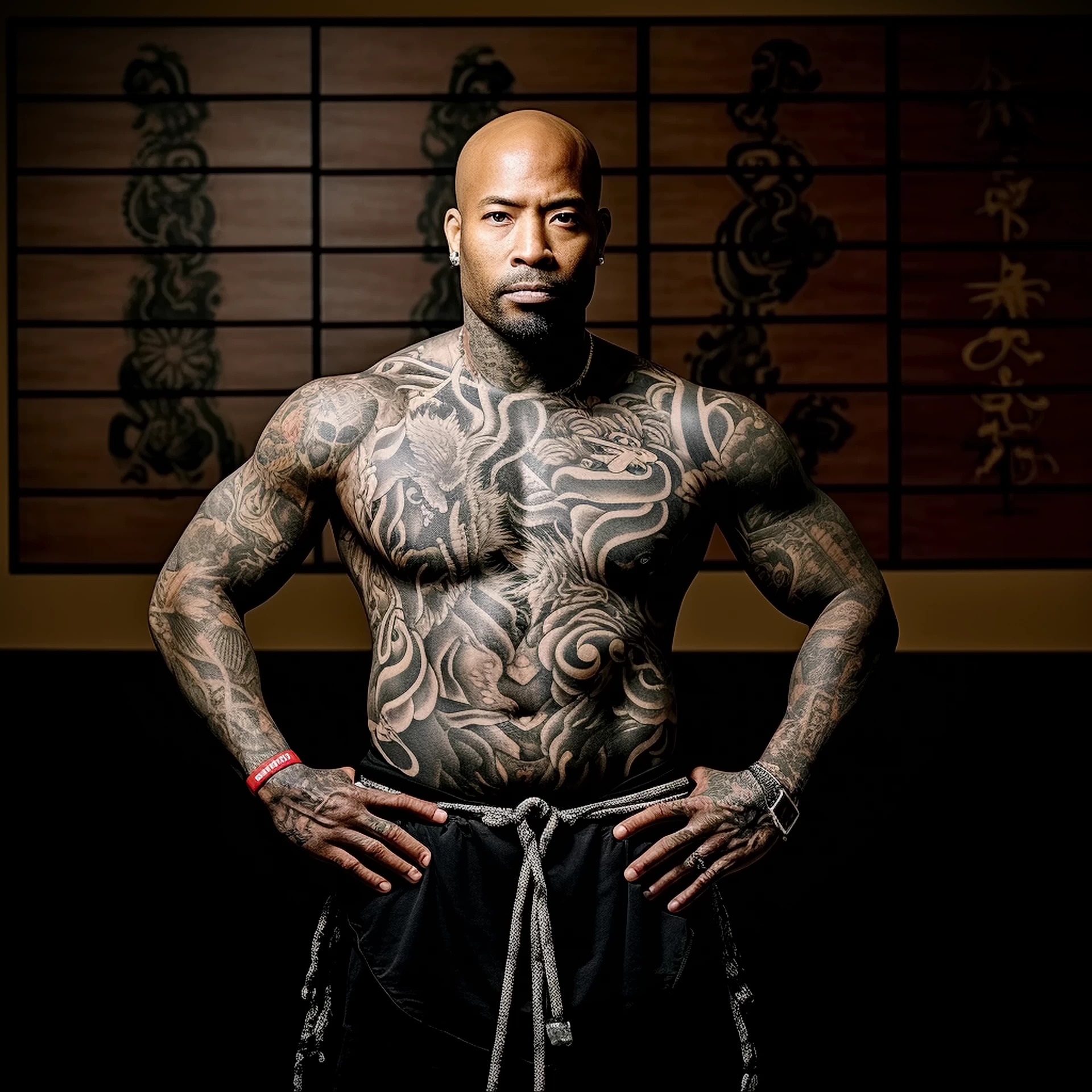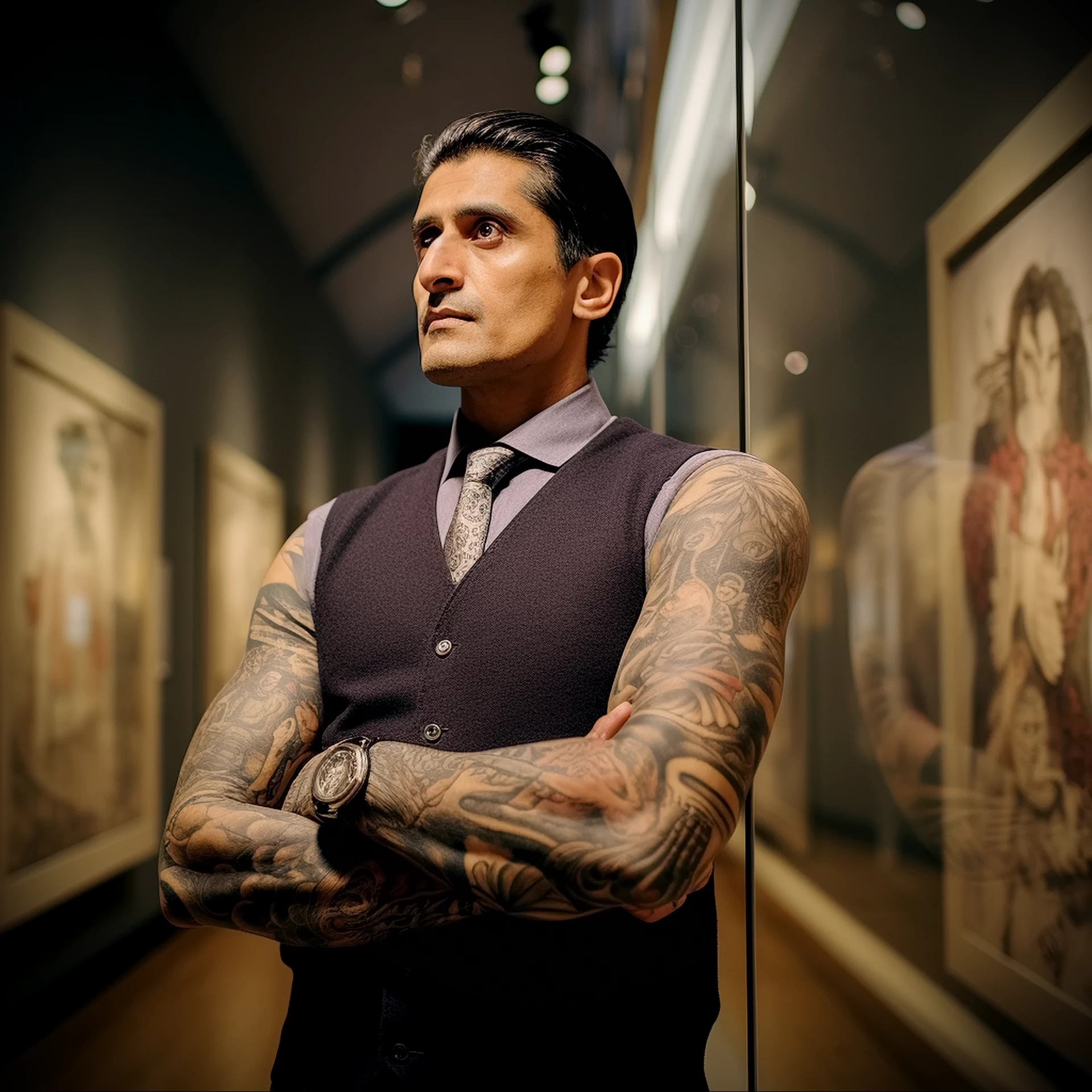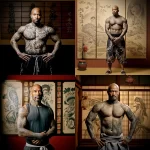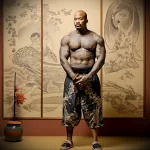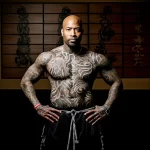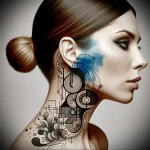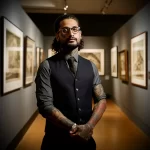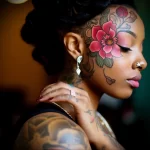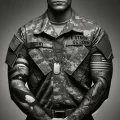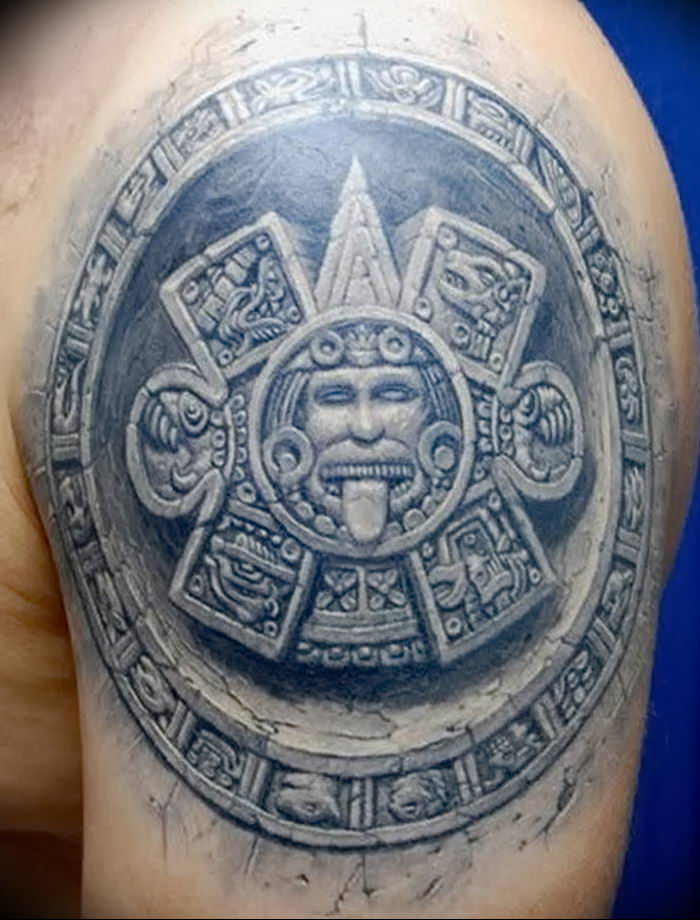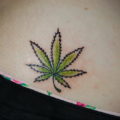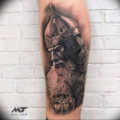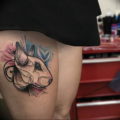In the world of art, there exists a unique form of expression that has deep roots in history and allows people to connect their identity so closely with a work of art that it becomes a part of their body. This art form is tattooing. Tattoos have long ceased to be just skin decoration; today, tattoos serve as works of art integrated into the very essence of the human soul. In this article, we will delve into the world of tattoos and explore how tattoo artists collaborate with other artists to create unique masterpieces on their clients’ bodies. Are you ready to learn more about how skin becomes a canvas for art?
Introduction to the History and Culture of Tattooing
Tattooing, as one of the oldest forms of art, has a rich heritage and has been deeply rooted in various cultures around the world for centuries. From simple symbols and marks denoting status or achievements to complex artistic representations, tattoos have played a significant role in human history and the evolution of self-expression.
A Brief History of Tattoos
Tattoos have a millennia-long history, dating back over five thousand years. The oldest discovered tattoos belonged to Ötzi the Iceman, who lived around 3300 BCE, and they consisted of simple lines and dots. Tattoos played various roles in different parts of the world, from ritualistic practices and markers of social status to amulets and symbols of beauty. Over time, tattoos became accessible to people from all walks of life and are now a popular form of personal expression.
Tattoos in Different Cultures
In the diversity of cultures, tattoos have held and continue to hold a central place in artistic self-identification. In Polynesian culture, traditional tattoos known as “tatau” carry deep social and spiritual significance, reflecting the wearer’s history and rank. Among Japanese samurai, tattoos were symbols of honor and bravery, while in some African tribes, they served as protective charms and symbols of tribal belonging. In many cultures, tattoos were considered an art form capable of influencing a person’s destiny and health.
The Evolution of Tattooing as an Art Form
The art of tattooing has undergone an epochal development, from primitive methods that used sharp objects to introduce ink under the skin to modern tattoo machines that allow for intricate, highly detailed artwork. Today, tattooing has become a full-fledged artistic movement, where each style, whether it’s realism, old school, tribal, or biomechanical, reflects not only personal preferences but also the subtle aesthetic sensibilities of the tattoo artist and their client. This art form continually evolves, incorporating new technologies and artistic trends, while remaining an eternal companion of humanity in its pursuit of beauty and self-expression.
Transitioning from ancient rituals to modern trends and artistic movements, the world of tattoos represents a unique interweaving of history, culture, and art. In the following sections, we will explore in detail how this ancient ritual has transformed into one of the most dynamic and expressive forms of contemporary art.
Tattoos as an Artistic Genre
Tattooing, which has become a genuine artistic genre in our time, has come a long way from primitive symbols to multifaceted works of art.
The Evolution of Tattoo Styles
Contemporary tattoo art encompasses numerous styles and directions, each with its own history, distinctive features, and execution techniques. From traditional American style with bold outlines and vibrant color palettes to delicate and mystical black and gray graphics, each style represents a distinct world. Japanese irezumi, sacred geometry, tribal, new school, dotwork, and realism are just some of the directions that allow tattoo artists and their clients to bring their boldest artistic ideas to life. Over time, tattooing has embraced new styles, reflecting cultural changes, technological innovations, and the endless quest of humanity.
Changing Perceptions of Tattoos
While tattoos were once associated with marginalized elements of society or specific social groups, they have now become a recognized means of self-expression for millions of people worldwide. Overcoming stereotypes and prejudices, tattoos have gained the status of true art capable of conveying depth of feelings and subtlety of thought. This shift in the perception of tattoos is confirmed by the fact that works of renowned tattoo artists are exhibited in galleries and art shows alongside classical works of art.
Tattoos and Fashion
The inseparable connection between tattoos and the world of fashion has become evident in recent decades. Tattoo designs have become a source of inspiration for fashion designers, and tattoo artists often collaborate closely with clothing designers, creating unique looks for runways and photoshoots. In turn, fashion trends have a noticeable influence on tattoo art, making certain motifs, colors, and shapes popular. This mutual influence underscores the role of tattoos as an integral part of contemporary culture and aesthetics.
The art of tattooing is a living and dynamic form of artistic expression, carrying within it the depth of history and cultural diversity. Having traversed centuries, tattoos continue to evolve and adapt, reflecting the spirit of the times and enriching the global artistic panorama.
Tattoo Artists as Artists
Elevating the art of tattooing to the level of true artistry requires not only technical skills but also a deep artistic vision. On the pages of tatufoto.com, dedicated to the world of tattoos, you can find detailed stories about the craft and techniques of tattooing, exploration of unique styles of tattoo artists, and analysis of portfolios that allow you to see the contributions of individual artists to the development of this art form.
Mastery and Techniques of Tattooing
Creating high-quality tattoos requires a tattoo artist to have not only artistic abilities but also in-depth knowledge in the fields of anatomy, dermatology, and hygiene. The artist must be proficient in various techniques, from shading to line work, and understand how different types of skin react to needles and ink. Expertise in factors such as needle depth and machine speed is crucial for the final result and the safety of the client.
Unique Style of Tattoo Artists
Every great tattoo artist has their unique style that makes their work recognizable. Developing one’s own style is a lengthy process that involves not only technical refinement but also a deep exploration of one’s visual language. The journey from imitation to creating original works is a path that each artist takes in their own way.
Portfolios of Tattoo Artists
A tattoo artist’s portfolio is their face, an opportunity to showcase their best work to the world. By analyzing the portfolios of renowned artists, you can trace the evolution of their style, the techniques and motifs they prefer, and how they influence the trends in contemporary tattoo art. Portfolios of artists are their artistic diaries, and each tattoo in them tells a story of the interaction between the artist and the client, the exchange of ideas and techniques, and the moment of inspiration and its realization.
Through the portfolios of artists, the history of tattoo art unfolds, where each individual tattoo is a part of a larger journey.
Collaboration between Tattoo Artists and Artists
The collaboration between tattoo artists and traditional artists goes beyond simply transferring an image onto the skin; it’s a dialogue between two art forms, an exchange of ideas, and a mutual enrichment of styles. Such interaction opens new horizons for both sides, allowing them to create works where inspiration and craftsmanship intertwine.
Collaborations and Projects
Examples of successful collaborations between tattoo artists and traditional artists can be found in various art projects around the world. These collaborations often begin with a shared idea or concept that is then developed together. Tattoo artists bring their knowledge of tattooing techniques, while traditional artists offer their original artistic perspective and style. Such projects not only push the boundaries of what is possible in tattoo art but also often draw attention to social and cultural issues, making art more accessible and meaningful.
Translating Canvas into Tattoo
Translating a work of art onto the skin is not simply copying an image; it is a technically complex and creative process. Tattooing requires taking into account the body’s contours, the characteristics of the skin, and how the image will age over time. In collaboration with a tattoo artist, an artist must adapt their work while preserving its artistic value and considering the limitations and possibilities of tattooing. This art form requires a deep understanding of color, form, and space, as well as the ability to work on a “living” canvas.
Artists and the Tattoo Industry
The influence of well-known artists on the tattoo industry is profound. Artists such as Salvador Dali or Jean-Michel Basquiat have inspired entire generations of tattoo artists with their styles and techniques. Their works are often adapted into tattoos, creating new visual languages and approaches in tattoo art. Contemporary artists also actively engage with the industry, sometimes creating works initially intended to be embodied in tattoos.
These collaborations not only enrich the visual repertoire of tattoo art but also attract a new audience interested in tattoo culture. They blur the lines between “high” art and tattooing, emphasizing the fact that skin is just another canvas for artistic self-expression.
Social and Cultural Significance of Tattoos
The social and cultural significance of tattoos remains the subject of deep research and endless discussions. Tattoos are not just body adornments but also a means of self-expression, symbols of belonging, or even acts of protest. Tattoos serve as mirrors reflecting both personal stories and the cultural currents of contemporary society.
Tattoos as a Means of Communication
Tattoos often serve as a tool of communication, allowing individuals to convey social and personal messages without words. They can symbolize important life events, personal achievements or losses, express worldviews, or signify allegiance to a particular social group. Tattoos as a form of nonverbal communication can be understood or interpreted differently depending on the social context and the observer’s personal beliefs.
Tattoos in Contemporary Culture
The role of tattoos in pop culture continues to grow. They are visible on magazine covers, in music videos, movies, and become part of the image of celebrities, making them a mainstream element. The art of tattooing has become a source of inspiration for designers and artists, appearing on canvases, clothing, and accessories. In music and cinema, tattoos are often used to complement or emphasize a character’s personality, history, or social status.
Cultural Identities and Tattoos
Tattoos are closely tied to cultural identity. In many cultures, they are part of rituals and traditions, helping to mark significant life stages, social status, or affiliation with a particular ethnic group. For many people, a tattoo is a way to maintain a connection with their roots and cultural heritage. In a globalized world, tattoos become expressions of uniqueness and individuality, as well as a way to assert one’s cultural identity in mass culture.
Tattoos play a significant role in the social and cultural landscape of the present day. They are not just adornments but a kind of social language that helps people express their thoughts, feelings, and belonging. More and more people turn to the art of tattooing to tell their stories, share their experiences, and express their views on the world.
Technical Aspects of Tattooing
The technical aspects of tattooing play a crucial role in turning the body into a canvas for art. From the choice of tools and materials to the strict adherence to safety and hygiene standards, all these elements are essential to ensure that the tattooing process is not only creative but also safe.
Tools and Materials
The primary tool of a tattoo artist is the tattoo machine, which can be either traditional coil-based or modern rotary or pneumatic. The choice of machine depends on the artist’s preferences and the nature of the work. High-quality inks are also of paramount importance, as they must be safe for health and provide color saturation and durability. A variety of needles are used for different techniques, from fine lines to broad fillings and shading. Each tool and material is chosen based on its functionality and its suitability for the style the artist plans to create in the tattoo.
Safety and Hygiene
Adhering to safety and hygiene standards is a mandatory requirement for any tattoo studio. The use of disposable needles, gloves, and other disposable materials helps prevent the transmission of infections and bloodborne diseases. The tattoo artist’s workspace should be sterilized, and all tools must be thoroughly cleaned and disinfected before use. Specialists monitor the maintenance of sterility at all stages of tattooing, from preparing the skin to caring for the tattoo after it is completed.
Training and Qualification of Tattoo Artists
To become a qualified tattoo artist, one must undergo training, which can include formal courses or apprenticeships under the guidance of an experienced master. Many tattoo artists take specialized courses on hygiene and safety and study various tattooing techniques. Masterclasses and seminars conducted by renowned tattoo artists provide additional opportunities for professional growth and the development of a unique style. Continuous learning and practice are integral parts of the profession, as technologies and trends in the world of tattoos are constantly evolving.
The technical aspects of tattooing form the foundation for creating high-quality and safe art on the skin. A responsible approach to training and maintaining high work standards allows tattoo artists not only to create beautiful works of art but also to earn the trust of clients, ensuring their health and safety.
Prospects of Tattoos as Art
The prospects of tattoos as a form of art look particularly promising in the backdrop of rapid technological advancements and an increasingly expanding digital world. Modern technologies are opening unprecedented horizons for the tattoo industry, and digital platforms are becoming key in promoting artists and interacting with clients. Let’s try to assess the direction in which the art of tattooing is likely to evolve in the future, based on existing trends and innovations.
Innovations and Technologies
Innovations in the tattoo industry are not limited to the introduction of new machines and materials; they also involve the integration of software for tattoo design, enabling artists to plan their work with utmost precision. Additionally, technologies that make the tattooing process less painful and safer are being developed. For example, laser technology is already widely used not only for tattoo removal but also for correction. Moreover, there are promising developments in the realm of temporary tattoos that can last for days or weeks, and they can be applied using advanced inks that react to changes in the body.
Tattoos in the Digital Era
The digital era has transformed the ways in which tattoo artists engage with their audience. Social media platforms such as Instagram and Pinterest have become showcases for portfolios, allowing tattoo artists to reach a global audience. Electronic platforms provide convenient tools for booking sessions, managing client databases, and conducting online consultations, making the process more inclusive and accessible. Additionally, digital commercialization of tattoo art is on the rise; the opportunity to sell exclusive designs online opens up new avenues for earning and self-expression for tattoo artists.
The Future of Tattoo Art
Predicting the future of tattoo art is a challenging task, but current trends suggest that it will increasingly intertwine with other spheres of culture and art. Already, tattoos have a growing influence on the fashion and film industries. Tattoos are subjects of academic research and are featured in galleries and museums. It can be expected that in the future, new forms of tattoo art may emerge, possibly incorporating embedded technologies such as glowing inks or interactive elements controlled through smart devices. It is also possible that the legal framework regulating the tattoo industry will become more standardized globally, ensuring even greater safety and recognition of this art form.
The prospects of tattoos as art are promising, and this form of self-expression will continue to evolve, adapting to a changing world while remaining true to its roots and original aesthetics.
In Conclusion
Tattooing is an art form with a history spanning millennia. It has weathered numerous epochs, cultural shifts, and technological innovations without losing its relevance and significance. Today, tattooing is not just a body adornment but a full-fledged form of artistic expression, a way to tell a story without words, and a powerful means of self-expression that reflects the depth of human experiences.
Tattoos are undoubtedly a unique artistic practice, combining craftsmanship, the depth of ideas, and personal significance. Through tattoos, people can express their individuality, commemorate significant life milestones, convey their views and beliefs. Tattoos will continue to evolve alongside society and culture. Their influence on art will only grow stronger thanks to new technologies and materials, as well as the emergence of new talented artists, each contributing to the development of this ancient art. With increasing accessibility and acceptability, tattoos are expected to play an even more prominent role in mainstream culture, becoming both an everyday phenomenon and a field for experimentation and innovation.
Tattooing as an art form has a rich history and a promising future. It represents a living canvas that constantly changes and evolves in the hands of tattoo artists and those who choose tattoos as a way to tell their story to the world.

